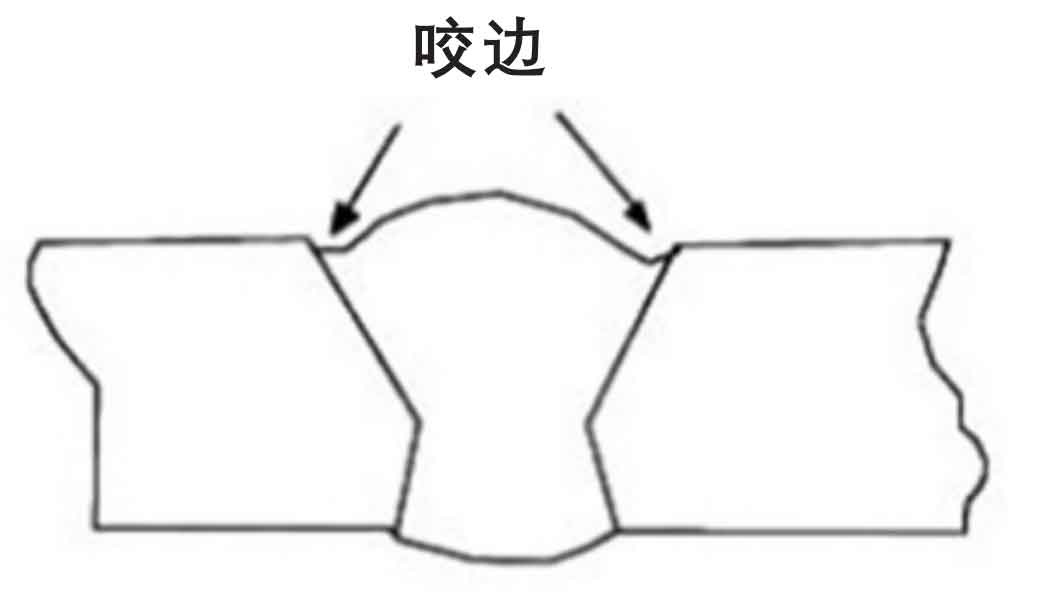Exactly How to Avoid Weld Undercut: Crucial Tips for Welders
Exactly How to Avoid Weld Undercut: Crucial Tips for Welders
Blog Article
Recognizing the Causes and Solutions for Undercut Welding in Steel Construction Procedures
In the world of steel construction processes, the incident of undercut welding presents a considerable difficulty that requires an extensive understanding of its causes and feasible options. The complex interplay of various factors during welding procedures can bring about this unwanted sensation, affecting the structural integrity and overall top quality of the bonded joints - Preventing weld undercut. By exploring the origin of undercut welding and exploring reliable therapeutic procedures, producers can raise the requirement of their workmanship and ensure the manufacturing of perfect metal components
Usual Sources Of Undercut Welding
Regularly forgotten in metal fabrication, undercut welding takes place because of various variables that demand meticulous focus and expertise to be properly minimized. One typical source of undercut welding is extreme heat input. When the warm input is expensive, it can bring about the melting and subsequent disintegration of the base material along the sides of the weld joint, developing a groove or undercut. Furthermore, incorrect welding techniques, such as making use of the wrong welding angle or take a trip speed, can likewise add to damage development. Insufficient shielding gas coverage is an additional essential variable that can result in damaging. Insufficient gas coverage falls short to protect the weld swimming pool properly, bring about oxidation and undercut problems. In addition, the choice of welding specifications, such as voltage, existing, and wire feed speed, plays a substantial role in the event of undercut welding. Comprehending these usual reasons is vital for executing safety nets and making sure high-quality welds in metal construction procedures.
Impact of Incorrect Welding Parameters
Incorrect welding specifications can significantly compromise the stability and top quality of welded joints in steel manufacture processes. The impact of inaccurate welding criteria shows up in various ways, leading to structural weak points and flaws in the welded parts. Meticulous interest to welding specifications is extremely important to ensure the production of top quality welds with the preferred mechanical buildings and architectural honesty.
Impact of Improper Torch Angle
Incorrect torch angle in welding operations can significantly affect the high quality and integrity of the final weld joints in metal manufacture procedures. Undercutting is a common welding issue where a groove creates along the weld toe, deteriorating the joint and compromising its architectural stability.
A torch angle that is too steep can bring about not enough penetration, incomplete blend, and enhanced spatter. On the other hand, a lantern angle that is as well shallow can cause too much penetration, burn-through, and distortion of the base product. Preventing weld undercut. Correct torch angle is essential for making certain constant weld top quality, stamina, and appearance
To stop damaging and other issues triggered by improper lantern angles, welders need to be educated to preserve the correct lantern angle throughout the welding process. Normal monitoring Visit Website and change of torch angles throughout welding can assist attain sound welds with marginal defects.
Duty of Inadequate Welding Techniques

One more element of insufficient welding methods is improper weld preparation. Poor cleansing of the base steels, inaccurate joint style, or insufficient edge prep work can all add to damage welding. Inadequate securing gas coverage or making use of the incorrect type of gas can result in incomplete blend and the formation of undercut defects.
To resolve the duty of insufficient welding techniques in steel construction procedures, it review is vital to provide comprehensive training for welders. Appropriate education on welding criteria, joint preparation, and securing gas option can aid protect against undercut welding and ensure high-grade welds in metal fabrication tasks.
Effective Solutions for Undercut Welding
Addressing undercut welding in steel fabrication calls for executing reliable services to boost weld high quality and architectural integrity. Among the primary remedies to fight undercut is to readjust welding parameters such as voltage, existing, and travel speed to ensure appropriate warmth input and fusion. By fine-tuning these setups, welders can prevent extreme melting of the base metal and filler material, lowering the likelihood of undercut development.
In addition, proper joint preparation is critical in avoiding undercut. Making certain clean base metal surface areas devoid of pollutants and making use of the appropriate bevel angle can assist advertise far better weld penetration and decrease the danger of undercut - Preventing weld undercut. Using suitable welding techniques, such as weaving or oscillating the lantern, can additionally aid in distributing warmth equally and filling the weld joint effectively, decreasing the possibility of undercut defects
Additionally, choosing the right welding consumables, consisting of electrodes and filler steels, is essential in mitigating undercut. Using materials with suitable chemical structures and mechanical homes can add to accomplishing audio welds with very little undercut. Normal assessment and quality assurance actions need to additionally be applied to detect and address undercut issues promptly, ensuring the overall honesty of made steel elements.

Final Thought
Finally, understanding the causes and remedies for undercut welding in steel construction processes is essential for achieving high-quality welds. By addressing usual causes such as incorrect welding criteria, inappropriate torch angle, and inadequate welding strategies, welders can stop undercutting and ensure solid, durable welds. It is vital to take note of these variables and apply efficient solutions to boost the general welding procedure and last product top quality.

Report this page